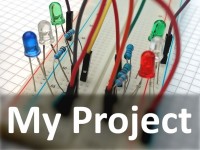The PSoCamorph

First thoughts on the PSoCamorph, a PSoC3-based music synthesizerBy Kendall Castor-Perry
First thoughts on the PSoCamorph, a PSoC3-based music synthesizer
By Kendall Castor-Perry
The 1970s produced several major analogue music synthesizer projects from the key hobbyist electronics magazines of the time – Elektor, Practical Electronics and Electronics Today International high on the list. These complex beasts represented the pinnacle of electronic engineering aimed at the serious amateur. I built a hybrid of the PE Minisonic and the ETI 4600 synth designs for a school friend of mine. It was assembled to a constructional standard that I would nowadays be ashamed of, but I still remember the great excitement from hearing the raw, raspy, modern sounds that it produced, in an English suburban bedroom in the mid-70s.
Elektor’s contender for the Heavyweight Championship of Home-Built Electronics was the Formant synthesizer. The complete set of articles for this well-conceived, well-executed instrument can still be downloaded from the Elektor website. At over 100 pages, this compendium of design (and usage) techniques represents a triumph of technical journalism.
You might ask “Why all this old analogue guy nostalgia?” One reason is that it’s hard to think of a system that can demonstrate more of the skills required in both circuit design and signal processing theory. Lessons I learned from studying analogue synthesizer design, and then trying to build the things, have lasted through to today. It’s quite possible that my life-long love affair with filters was initially triggered by building, and listening to the effects of, the classic Moog-style “ladder VCF”.
These days, the power of digital processing is such that the vast majority of synthesizer work is carried out entirely in the digital domain. The synthesis and emulation of musical sounds is achieved with millions or even billions of digital instructions per second, with no analogue in sight except at the voice-coil of the loudspeaker. Sadly, as an old-fashioned kind of electronics guy, I can’t get too excited about projects that just boil down to creating and coding algorithms. It seems entirely too ‘virtual’ to me. Nevertheless, digital processing and control has brought a host of advantages to the music synthesizer in the last 25 years or so.
Those classic hobbyist synthesizers were built from discrete components and simple ICs, with not a micro or digital signal processor in sight. However, nearly 40 years on, there are more compact devices and more compact design methods for us to employ. In this article, I argue that the time is right to revisit some of the more fundamental, primitive and visceral ways of synthesizing musically-useful sounds with simple mixed-signal electronics.
This is not the start of a series of articles on how to build a music synthesizer, with all the circuits completely designed, prototyped and tested. It’s a mission statement – a proposal for a collective design and development process, seeded by more articles with architectural commentaries and theoretical background on what is useful in such a synthesizer. My goal here is threefold:
- bring a satisfying, compact and usable music synthesizer platform into being;
- showcase the flexibility of Cypress’s latest mixed-signal SoC devices;
- contribute to a crowd-sourced collaborative project that brings the best out of the wide electronics community.
Because – hopefully anyway – there will be so many of you out there working on alternate realizations of key elements, we may end up with both analogue and digital variants of the key processing blocks. Why a mixed-signal synthesizer? Well, the flippant answer would be “because we can”! One significant reason is that it illustrates that there’s usually both an analogue domain and a digital domain solution to any particular engineering challenge. The comparison between the design methodologies will be invaluable for teaching people both about synthesizers and about design on a mixed-signal platform.
So, it’ll mostly be up to you, dear readers, to put flesh on the architectural skeleton that I’ll try to lay out here and in some follow-up articles. There’s a mass of useful information out there on the web (Prof. Julius Smith at CCRMA in Stanford is particularly prolific) The classic “Musical Applications of Microprocessors” by Hal Chamberlin contains some quaint eighties-style circuitry, from the era when an 18bit DAC cost $1000! But there’s a tremendous amount of learning in that book. The original magazine articles on their grand synthesizer designs also contain great tips that are just as relevant now as they were a generation ago.
While I do want this design to be cheap – and all of you out there to be cheerful – I don’t want too many corners to be cut. The end result – or results, since I’ve no doubt that this project will fork into multiple designs in the wild – still ought to be both an interesting project and a capable musical instrument Some of you will inevitably want to, or be able to, get involved more than others. If you’re willing to sign up to work on a specific block of the synthesizer as a sort of ‘team leader’, we’ll make sure that a PSoC development system will beat a path to your door.
If (and I’m hoping that there’s not too much ‘when’) people have questions about how to persuade the blocks in the PSoC devices to carry out some particular function, report the issue to the Elektor design forum, and someone will help find the necessary information within Cypress to help you out.



Discussion (12 commentaire(s))